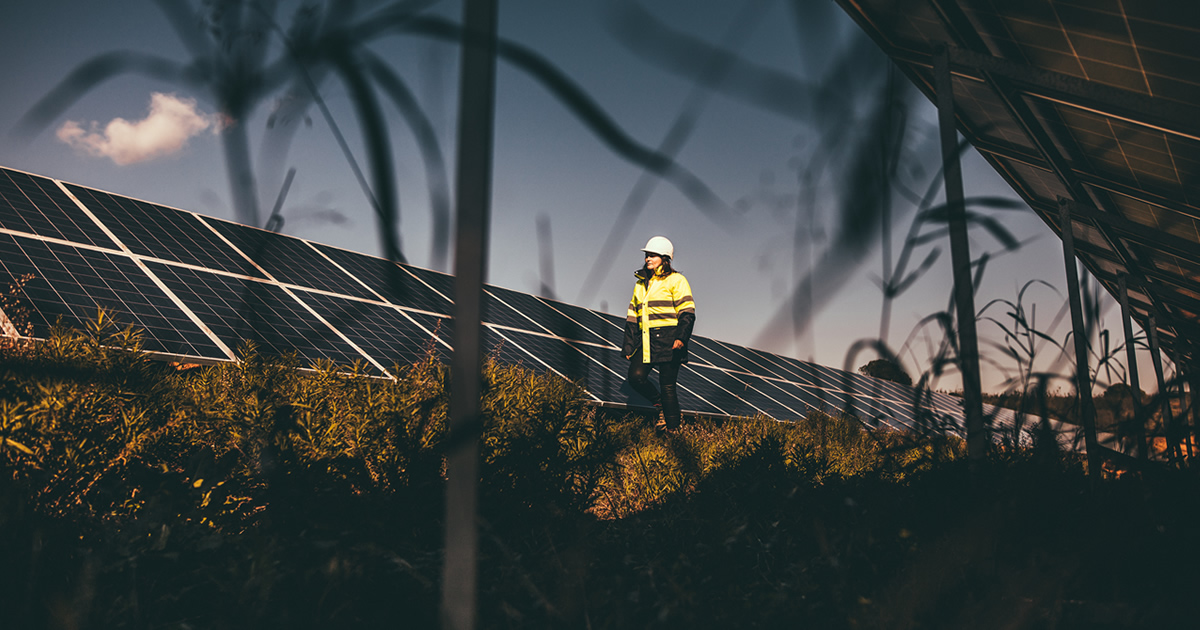The challenges and responsibility of the energy sector
There are many challenges ahead, and the sector is shouldering a huge responsibility. The incumbent energy operators are now working to determine the risks which energy transition will entail for their current business, to formulate a strategy to ensure they prosper in a re-shaped energy sector and global economy and to implement their plans for change.
The last two decades have been the warmest on record. Climate events are becoming increasingly extreme, with floods, droughts, wildfires, storms and rising sea levels threatening different parts of the globe. Furthermore, experts warn that climate change will set off all kinds of disease. Climate change is anthropogenic, with the main cause being the increasing burning of fossil fuels to meet our growing energy needs.
The decarbonisation of the energy sector has been the subject of research for several years, and has recently been attracting more attention. It is widely acknowledged that the most obvious way of achieving decarbonisation is to use renewable energy (RE). Many countries are therefore already using an increasing share of their renewable resources, such as wind, solar, geothermal or water power to generate electricity. In fact, some countries have already achieved very high RE percentages for electricity generation from using water power, such as Paraguay (99%), Norway (97%) and Costa Rica (93%). In 2019, for example, China and the USA had the world’s highest installed wind and PV solar power capacity, according to the International Renewable Energy Agency (IRENA).
Nevertheless, experts state that decarbonising the energy sector entails various challenges, and the interdependencies between secondary energy carriers and end-use energy sectors should not be underestimated. Indeed, Jan Ingwersen, the director-general of ENTSOG – The European Network of Transmission System Operators for Gas, argues that “a system is more than the sum of its parts and that is certainly the case when it comes to the European energy system”. He believes that a coordinated approach can result in a stronger energy system, building on both gas and electricity carriers’ strengths. “Combining our efforts will enable better efficiency and reliability, facilitate the meeting of the EU Green Deal commitments, and address the post-Covid-19 recovery plan for a green economy”.
Changing landscape
As the debate further develops on how gas and electricity systems in particular can help the EU to meet its 2030 and 2050 climate and energy targets, ENTSOG recognises the changing landscape of the European energy market and consequently, the changing infrastructure needs for transporting increasing volumes of renewable and low-carbon gases, such as hydrogen and biomethane.
In ENTSOG’s ‘2050 Roadmap for Gas Grids’ – published in December – the European gas transmission system operators (TSO) make a number of recommendations on how to effectively combine well-functioning liquid gas markets and security, with the commitment to reach decarbonisation goals.
One of the recommendations specifically addresses the principles for sector coupling – that is, to allow for flexibility, storage options, cross-border transportation capacities and security of supply in a faster and more efficient way, whilst also meeting decarbonisation targets.
Jan Ingwersen suggests that for cost-efficient decarbonisation, a coordinated and coherent interaction between electricity and gases is essential. “Due to the intermittent nature of renewable energy, the power sector will need decarbonated gases to ensure security of supply and reach climate neutrality”. According to ENTSOF, Power-to-Gas, for example, enables renewable energy supply in the form of hydrogen to be transported via gas grids to sectors which are difficult to electrify. “This technology can help alleviate local/regional congestion in electricity infrastructure, avoiding the curtailment of non-dispatchable renewable electricity. It would thus contribute towards solving challenges in relation to balancing the power grid – for storage and flexibility”. Experts therefore believe that the challenge today is not in individual technologies – which are already primed and with proven results – but that they need to be massively scaled up in order to offer cost-effective climate benefits. Jan Ingwersen adds, “We believe it is possible to realise the synergies between the existing gas and electricity infrastructures and evolving technologies.”
Layers of complexity
The end goal of energy transition is clear: the decarbonisation of the global power system in order to achieve zero net emissions and a global temperature rise of no more than 1.5º C by the end of the century. And everyone seems to agree that definitively substituting hydrocarbons with renewable power and other forms of decarbonised energy will be crucial to this process. However, James Henderson, the director of the Energy Transition Research Initiative at the Oxford Institute for Energy Studies (OIES), highlights the importance of recognising that transition is – as the word suggests – a process of switching from one state to another. “And if it is to be successful, it must involve the managed decline of the existing energy system, as well as its transformation to a future state”. And so, claims the author in a document published by the institute, technology is the key to accelerating the process, but many complex questions remain to be resolved if the world is to avoid the transition becoming a disorderly mess.
The document raises issues such as regional differences in terms of economic factors and the energy mix, the reaction to energy transition from heterogenous groups of consumers, and the geo-political consequences of re-drawing the energy map. James Henderson also speaks about the pace of technological change, the re-purposing, refurbishment or replacement of infrastructure, the impact of market forces and the need for companies to radically adapt their business models in order to align with both government policy targets and regulations, and consumer preferences. This all adds “layers of complexity”, which are further compounded by the need to consider these questions across different countries and multiple sectors of the economy. “Given these issues, and the uncertainty over the achievable pace of change, the incumbents in the current energy system face a multi-layered challenge to determine the risks to their current business, to formulate a strategy to thrive in a re-shaped energy sector and global economy and to assess the optimal speed at which to implement their plans for change”. In other words, there is no shortage of challenges facing the sector.











